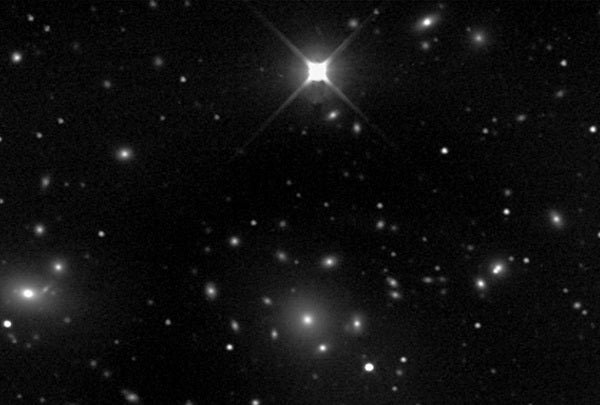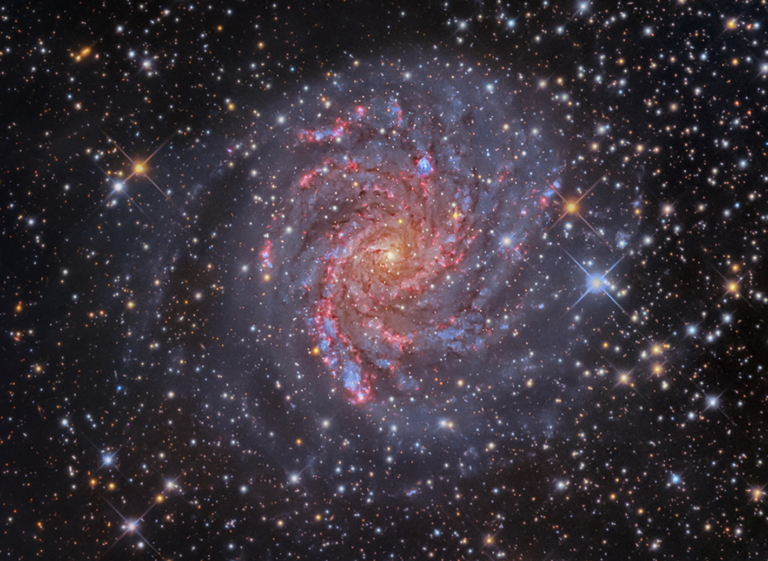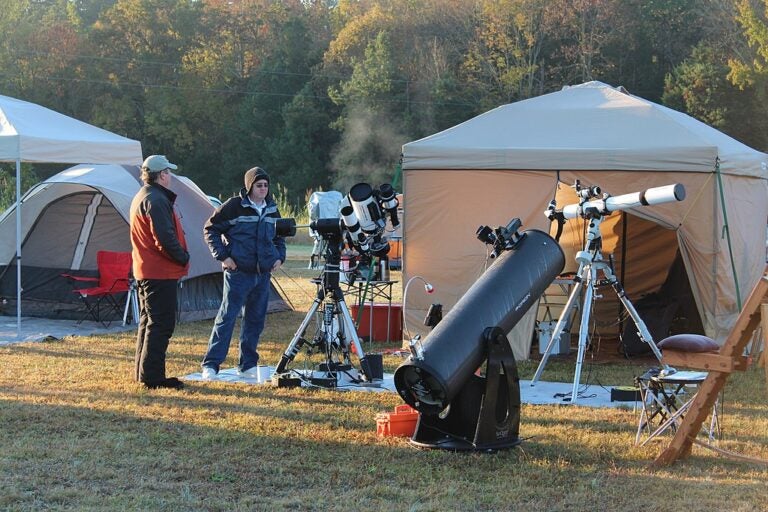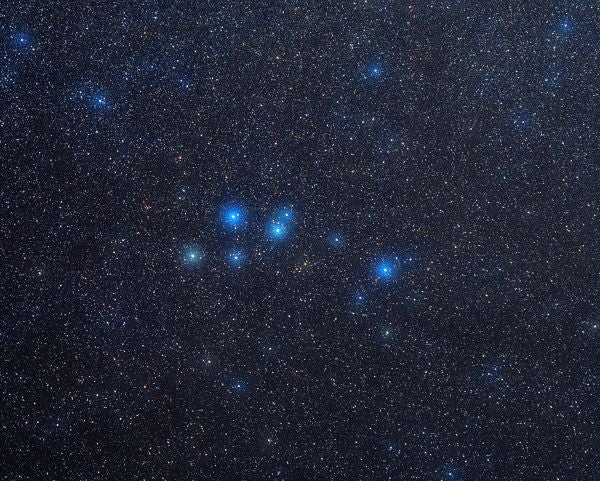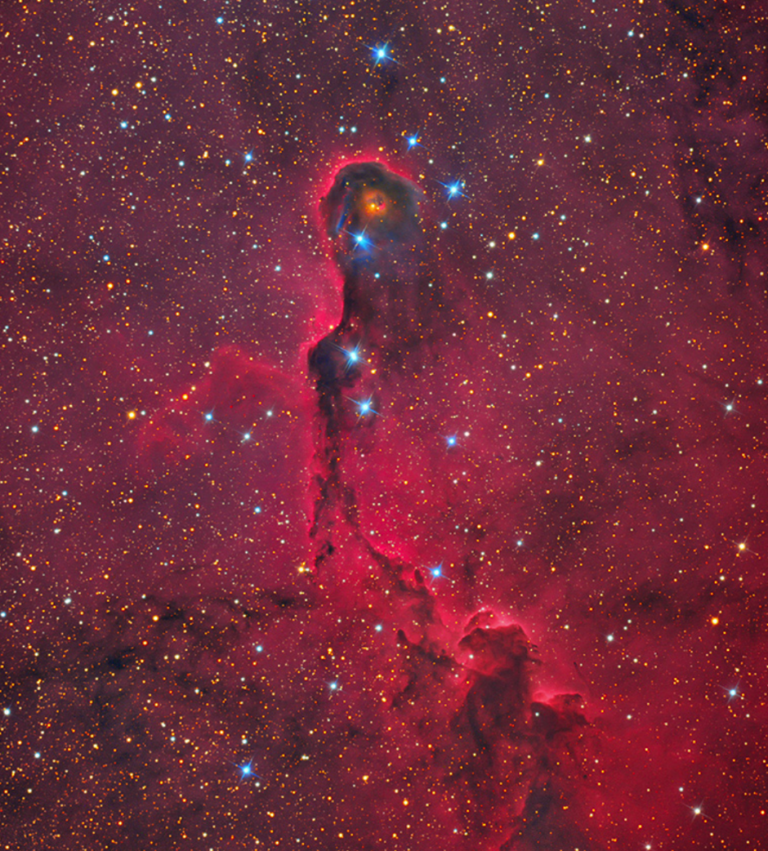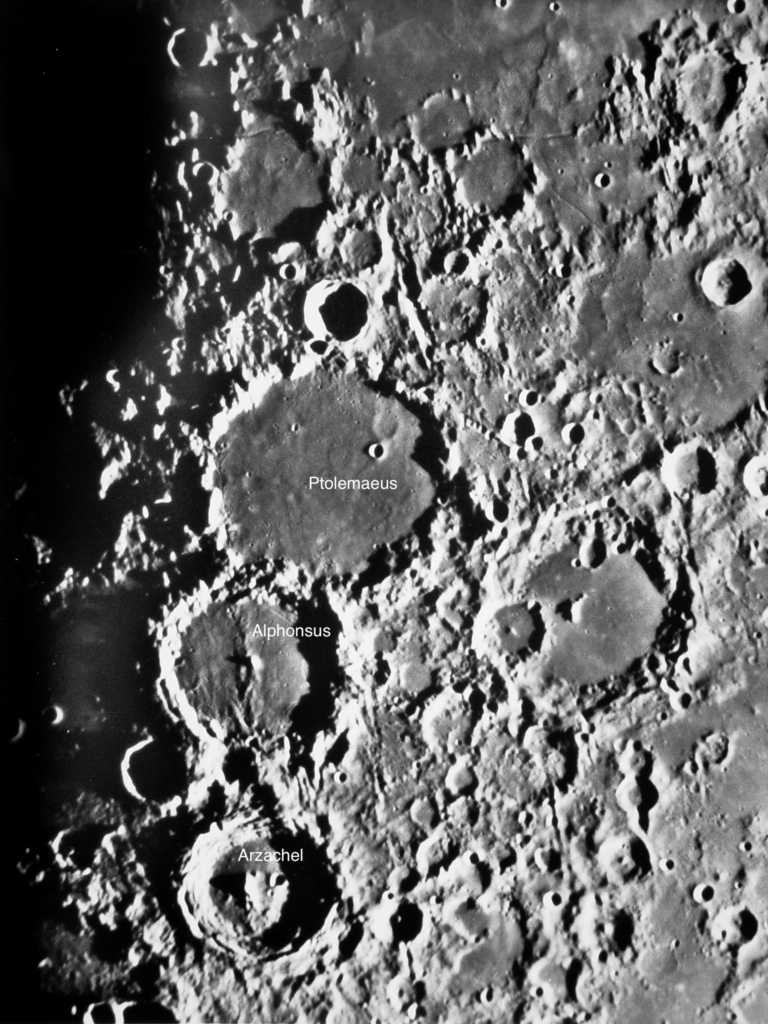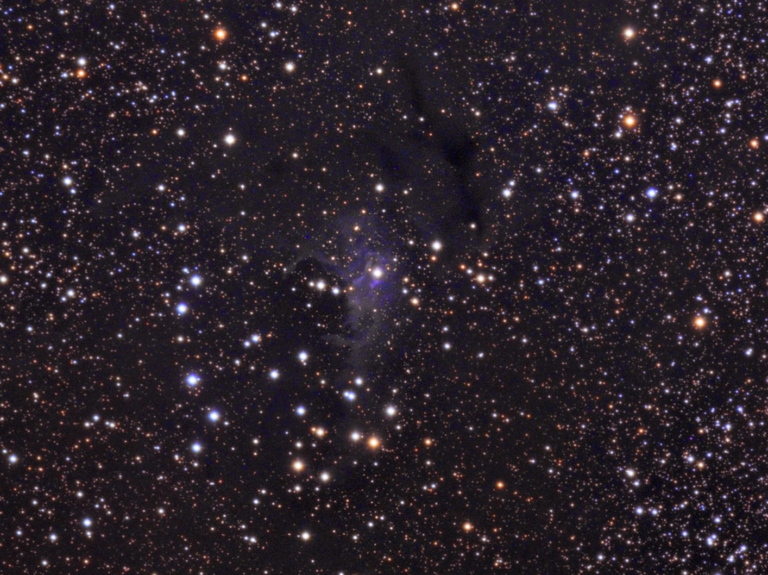As you might guess, the Coma galaxy cluster resides within the boundaries of the constellation Coma Berenices. If you have access to a large amateur telescope, you can search for it 2.7° due west of magnitude 4.2 Beta (β) Comae Berenices.
The Coma Cluster is huge, with over 1,000 galaxies within a 4°-wide field. The richest area, however, is the central 0.5°, a region that covers as much sky as the Full Moon.
This cluster’s designation is Abell 1656, taken from American astronomer George O. Abell’s catalogs. His original list contained 2,712 clusters in mostly the northern sky. An extension (after his death) covering the far southern sky brought the total number to 4,073 galaxy clusters.
Because this cluster lies some 330 million light-years away, not every galaxy in it is going to be a standout. What’s more, this cluster is dominated by elliptical galaxies that show few details. So, if you can view through a 12-inch or larger telescope from a dark site, at least try to identify the brightest members.
Four galaxies glow brighter than 12th magnitude: NGC 4884 (magnitude 11.5), NGC 4889 (11.5), NGC 4793 (11.6), and NGC 4874 (11.7). Five surpass 13th magnitude: NGC 4789 (magnitude 12.1), NGC 4839 (12.1), NGC 4921 (12.2), NGC 4911 (12.8), and NGC 4827 (12.9). If you start with a good finder chart of the region, you should be able to identify several dozen more by using these nine galaxies as starting points.
The Coma Cluster has an invisible claim to fame. In 1933, Swiss astronomer Fritz Zwicky was studying the motions of galaxies within Abell 1656. He concluded that the galaxies he could see were revolving around the center of the cluster 400 times faster than they should be, based on the visible mass of the cluster. He called the unseen mass dark
matter.
Make sure to explore Astronomy’s full list of 101 cosmic objects you must see. New entries will be added each week throughout 2022.

